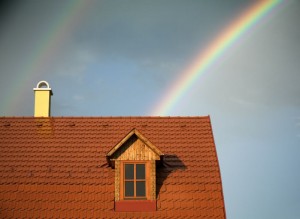How does your chimney impact air quality in the home?
Fireplaces and stoves bring along a lot of things we want: heat, light, ambiance, a soothing crackle. But the combustion happening in those appliances also creates byproducts we don’t want, like smoke and toxic gases. It’s your chimneys job to contain and remove those byproducts from your living space.

Proper ventilation in your chimney system is critical for optimal efficiency and for maintaining good air quality in your home.
A poorly performing chimney is letting those byproducts stay in your living space — and that means the air quality in your home is getting diminished. Environmental Chimney Service’s aim is to make sure our clients’ chimney systems are providing the best protection possible, and if you’re not sure about your chimney, a Comprehensive Chimney Inspection can offer more insight.
A Poorly Functioning Chimney Affects Your Air
Smoke can have a significant effect on people with respiratory issues like asthma, and a poorly drafting chimney will often allow smoke into your space. But another major concern is colorless, odorless — and toxic — carbon monoxide. It’s a natural byproduct of combustion appliances, and since you can’t see or smell it, it can make you sick (and can even be deadly) without you even knowing it’s there. A well-venting, smoke-tight chimney will move that CO up and out. A leaking chimney with a cracked or crumbling flue liner won’t do such a great job. Excess carbon monoxide can come from a poorly adjusted gas appliance or an appliance with an incorrectly sized flue, too.
There are many ways to ensure that you’re minimizing the byproducts that can diminish your air quality. Here are just a few:
Make sure to open your flue
Whenever you’re using your heating appliance, make sure the flue is open — forgetting to open the flue means those byproducts can’t get out of your chimney.
Use the best fuel for the job
If you have a wood-burning fireplace or stove, your ideal fuel is dried, seasoned hardwood. Wood with a higher moisture content burns cooler and produces more smoke and thus, higher levels of pollutants. Softer woods burn quickly, and also produce excess smoke. (And it goes without saying, but: Never burn trash in your fireplace or stove — plastics and chemically treated materials can put dangerous toxins into your air.)
Have leaks and other issues repaired as quickly as possible
The impact of putting off repairs might not be immediately obvious — but continuing to use a chimney with a damaged liner or firebox can be allowing higher levels of toxic gases into your home.
Schedule your regular maintenance
Optimum performance from your chimney system means a minimum level of pollutants. The best way to ensure optimum performance: regular maintenance. Regular chimney sweeping will ensure that your flue is free of debris and blockages and that deposits are safely removed. Annual inspections will keep you abreast of how well everything in your system is functioning — gas units can be properly adjusted, and if chimney cracks, gaps or other issues crop up, those problems can be corrected.
Consider replacing old, inefficient appliance with a new, EPA-certified one
Older stoves and fireplaces tend to be far less efficient than ones produced today, wasting more fuel and producing higher levels of emissions. Appliances that meet the emission standards set forth by the Environmental Protection Agency are particularly beneficial, if you’re interested in improving air quality. Ask your Environmental Chimney Service technicians for more details about EPA-certified appliances that might be right for your space!
